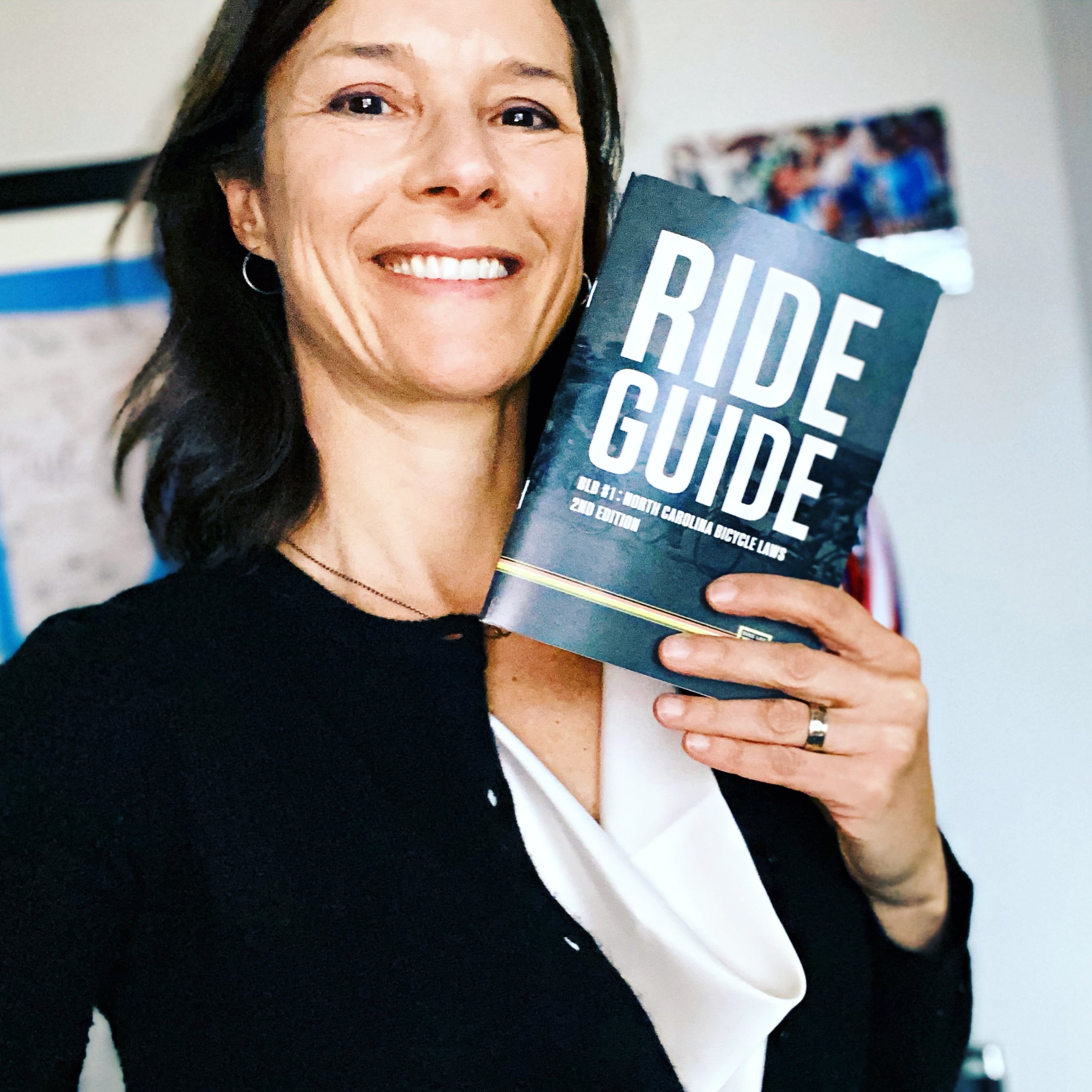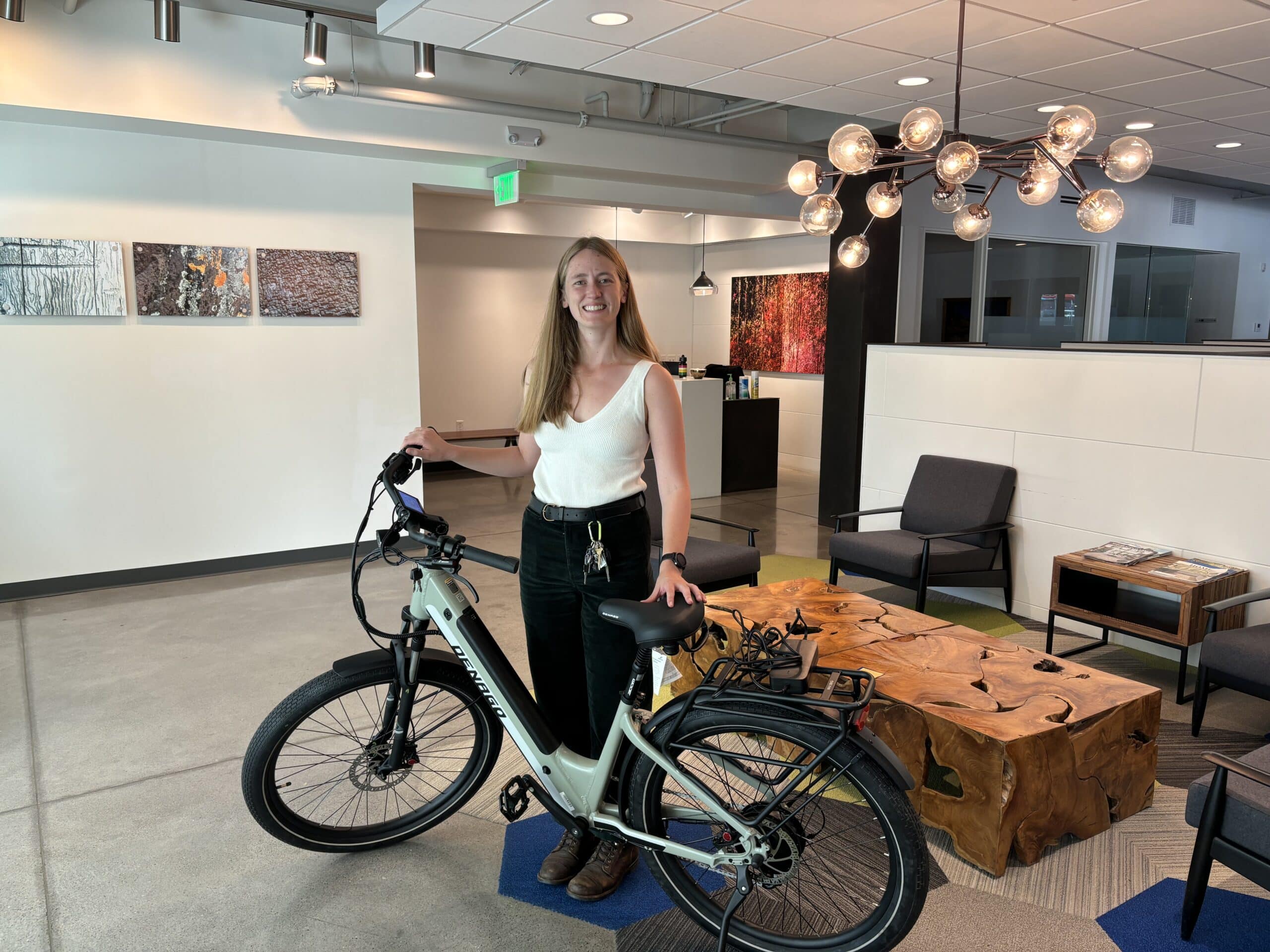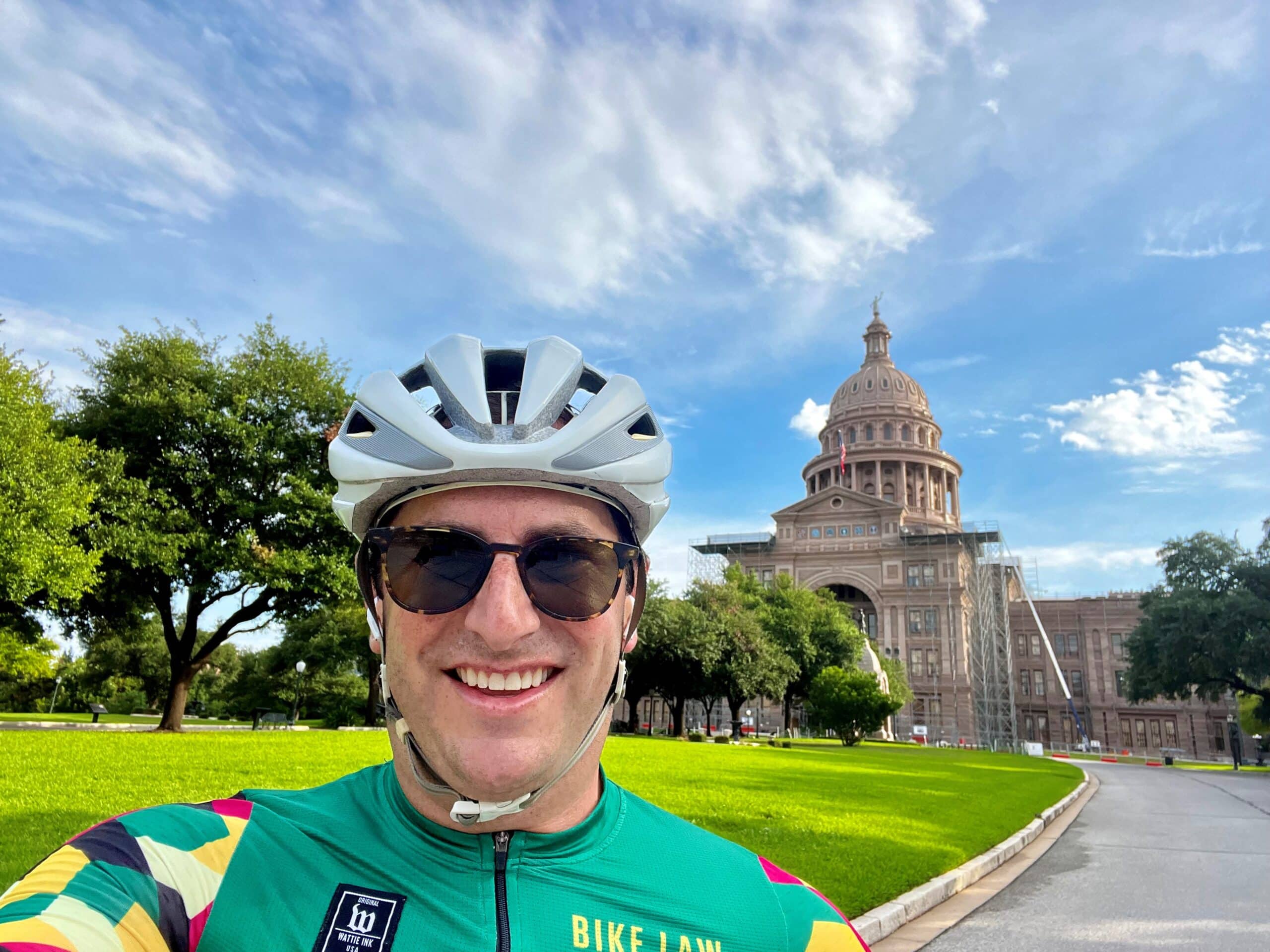What will biking after COVID be like? Before COVID, it seemed like there was a handful of people in my city who rode bikes to get places, and we all knew each other. We’ve always had a robust recreational road riding community of people who gather after work and on weekends to head out to country roads. But, despite the relative ease and convenience of bicycles for navigating urban areas, they have been less popular for trips to work or the grocery store.
THINGS HAVE CHANGED
In many places around the country, particularly in urban areas, that seems to have changed in the past few months.
On my trip to the courthouse last week I shared the road not just with car drivers but a guy who looked to be heading to or from a workout and a young woman with groceries in her front basket. My favorite encounter was an elderly woman who looked to be biking down the road to visit a friend (I guessed the purpose of the ride because she was wearing nice clothes); a scene I’d only previously seen in Europe. I personally know people who still live the same short mile from their offices as they did two months ago but have finally realized it’s easier and more fun to get there by bike than by car.

Whether it’s getting old bikes back in tune or selling new ones, bike shops have never been busier. As our friend, Ben Cooley, owner of Bicycle Sport Charlotte, said in a recent news interview: “Within the last two and a half, three weeks, it’s probably been 60 to 70 percent [of customers] are new riders or reemerging riders that used to ride, haven’t in a very, very long time, and due to the circumstances are getting back into it.” The shop has been conducting its business in the parking lot in front of the shop and has hired new employees, due to the COVID “bike boom.”
Bicycle Sport’s experience is similar to other shops around the state and around the world. “In March, nationwide sales of bicycles, equipment and repair services nearly doubled compared with the same period last year…Sales of commuter and fitness bikes in the same month increased 66 percent, leisure bikes jumped 121 percent, children’s bikes went up 59 percent and electric bikes rose 85 percent.”
Why have people started, or returned to, riding bicycles? A few theories:
- There have been fewer cars on the road; people who have always wanted to try bicycling but were afraid now feel more comfortable with it;
- People who usually take public transportation are opting for the increased social distancing that bicycling provides over buses and trains;
- Kids are home from school and parents are looking for outdoor activities that can be shared with the family;
- Parks, tennis courts and other outdoor facilities were closed, and people have been looking for different ways to get exercise and fresh air;
- Bars, breweries and other places where people hang out on weekends are closed, and those patrons are looking for other things to do;
- Health and fitness is more important than ever, and people have realized that bicycling is a great way to get there (and their gym is closed);
- Choosing a bike over car saves money;
- A combination of the above.
Whatever the reason, the number of owners of functioning bicycles has skyrocketed over the past few months. The big question is: how do we keep those bikes moving once the circumstances change? What will biking after COVID be like?
BIKING AFTER COVID?
What will happen once things return to “normal,” whatever that normal is? Will everyone return to their cars, eventually falling back into the routine of angrily rushing everywhere and multi-tasking while driving? Or have we gone through some kind of awakening in which people now realize the ease and joy of travel by bicycle? Only time will tell.
To keep the momentum going, we need to find the right combination of providing incentives to ride and removing the obstacles that prevented people from bicycling in the past. Here are some recommendations for what new bicyclists, experienced bicyclists, bike shops, advocates, employers and local government can do to make help keep people riding:
FOR NEW RIDERS: Some of us starting riding as kids and never stopped, but many experienced bicyclists were new bicyclists at one time. Though this section is geared toward new bicyclists, we could all use a refresher on some of the things that new bicyclists need help with so that we can point them in the right direction:
Getting the right bike: I remember when I bought my first road bike at Allstar Bike Shop in Raleigh. While it was undoubtedly among the lower-priced road bikes on the floor, it took me a while to get over the sticker shock. Luckily the patient and understanding sales person gave me some good advice: don’t blow your budget but get the best bike for your activity that you can afford. I did and rode that Giant TCR aluminum bike for 11 years.
Not everyone needs a 20-pound bike, but a lot can be said for buying a good quality and well-fitting bike from a knowledgeable dealer (a.k.a. your local bike shop). Big box stores may have incredible deals, and you may be happy with what you get, but there is also a chance that the bike will fall apart quickly (and potentially dangerously) and a very good chance that you’ll end up with a bike that does not fit your needs and is less enjoyable to ride.
For years, my dad rode a $200 full suspension bike that he got from an anonymous big box store. It pained me to think of him slogging along miles of paved greenway with those fat, knobby tires, and I regularly encouraged him to get a nice, lighter hybrid bike with narrower tires and no suspension. Not one to spend money on luxuries, he resisted. I finally couldn’t stand it anymore, gifted him a more svelte Trek hybrid bike for his 70th birthday. He rode it every day and would call to tell me how many miles he rode, usually over 25. He happily admitted that I was right!
For those on the tightest of budgets, many local bike shops do sell used bikes and will make sure they are in good shape before sending them out the door. Alternatively, if you buy a used bike from a neighbor or listing, a good local bike shop will check it out to make sure it’s running safely and efficiently.
In addition to helping you find the right bicycle, a local bike shop can be your partner in finding the most enjoyable riding experience. Besides making sure that your bike is properly fitted and equipped, the shop staff can be your bridge to a cycling community and connection to a host of resources to make bicycling more useful and enjoyable. (If your shop staff does not provide you with helpful information, ask to talk with the owner and if that doesn’t help, find a new shop; there are plenty in the area that are happy to make new riders feel welcome).
Finding the right gear: Having the right bike is an excellent first step, but what if you want to get groceries, carry work tools, or need to ride home at night? New cyclists have lots of questions about accessories. It takes time to get into the habit of charging lights. If you’ve been driving your car between couch and office, you might not be aware of the latest, most comfortable, commuting attire, helmets, and panniers.
Again, your local bike shop can provide education about gear or links to educational opportunities. Employers who want to encourage employees to ride to work (there are many reasons that they should) could provide resources and information to employees who need it. I have been invited to speak to company meetings for new bicyclists; any of us in the Bike Law network would welcome such invitations. Employers could have employees compete for gear prizes by logging rides. Municipalities could also launch incentive programs to encourage employers.
New riders who learn how to properly equip their bicycles will make their bicycling experience infinitely more useful and enjoyable.
Finding a route: Choosing a route can also be intimidating for newer riders, especially those navigating rush hour traffic. Your city may provide a map showing you how to connect bike paths and lower traffic roads. Apps like google maps and www.ridewithgps.com may help riders piece together a route. Check out this article for a one-stop collection of information and links for Charlotte (and beyond).
Experienced riders and bike shops may also provide guidance. For example, “Free Wheelin’ Fridays” is a Friday morning breakfast meeting at which bicyclists gather to commute into town together. Experienced riders and advocates should think about more ways to provide opportunities like this to newer riders.
Once you have all your gear and you are confident about your route, you don’t have to convince yourself to ride because the thought of driving there seems like such a pain. That’s when you know you’ve crossed the threshold.
FOR EXPERIENCED BICYCLISTS AND ADVOCATES: A handful of people do a lot of this. If we want this to work, everyone else needs to jump in:
Making bicycling fun: Bart Stetler, owner of Queen City Bicycles, has said it simply: we have to help new bicyclists make bicycling a habit. What better way to make bicycling a habit than to make it fun?
The possibilities here are endless, and any experienced bicyclists and groups can make them happen. Organize a bicycle scavenger hunt or an art gallery or brewery crawl. Offer a meeting spot to help new bicycle commuters navigate their way into work. Invite new bicyclists to join one of the many casual or family rides around town (again, see www.weeklyrides.com).
Bicycling, without any purpose other than to ride, is fun. But new riders may not yet have figured out the best way to have fun on a bike. It is up to us to show them.
Being inclusive: Cycling communities in many cities, including Charlotte, North Carolina, tend to be very tight-knit. There are sub-communities too: the commuters, the advocates, fixies, roadies, triathletes, mountain bikers, and more. There is intermingling and sometimes stark separation among groups. But when push comes to shove, we have each others’ backs. Over and over again, we’ve seen the community come together and raise money or provide other support when one of our own is in need.
If you are out there riding alone and not yet tied in with this community, find it and join it. Start with your local bike shop; ask for advice and about events for bicyclists. Next, check out www.weeklyrides.com online and social media for resources and connections. Many rides and events are appropriate for newer bicyclists.
For those of us who have already found our niche, let’s be encouraging and inclusive. Many people we’re seeing on bikes right now are trying it out for the first time. As hard as it may be to believe, they probably don’t know the rules of the road and are picking up where they left off when they were 12 years old riding a bicycle in and out of their driveways and down the block.
Instead of yelling at someone or glaring at them for doing something experienced bicyclists might think is stupid, how about (1) be glad this person/family started riding bikes. Studies show a direct correlation between increased bicycling and bicycling safety so this new rider benefits you, and (2) if you have the opportunity to speak with the person, kindly and in a non-judgmental way suggest resources for learning what the rules are and how to ride more safely. Perhaps invite them to join a local ride, casual or recreational, where they will pick up tips from more experienced riders.
Trying something new: if you put on your spandex and jump on your road bike to ride 100 miles, then get in your car to drive to the grocery store, how about getting that beater bike out of the garage and adding a rack and some paniers so you can ride instead? More people on any kind of bike will eventually change the culture and mindset around bicycling, and that will make your ride out in the country safer as well.
FOR ADVOCATES AND GOVERNMENTS:
Make bicycling easier than driving: There’s nothing like bad parking and inconvenient one-way streets to encourage people to ride a bicycle instead of drive. Some cities have taken these incentives a step (or ten steps) further. For example, the Dutch city of Groningen has divided its urban area into quarters. It is easy to walk or bike from one quarter to the next. To drive, however, you have to go back out to the perimeter and around. Throughout Europe, congestion, coupled with well-developed infrastructure, has made many Europeans realize that it is much quicker and easier to get from one urban area to the next by bike.
Of course, infrastructure takes time, and we hope the pandemic will end before most cities have the time to make such sweeping changes. (It is possible, however, and many European Cities are scrambling to build infrastructure. See, for example, this Washington Post article).
But we have to start somewhere. Some places have taken to closing off streets to cars to allow bicyclists and pedestrians to travel freely. Among cities that have taken more drastic steps (City of Charlotte, take note):
- New York has temporarily opened 100 miles of roads to pedestrian and bicyclists;
- Oakland, CA, is temporarily shutting down 10% of its streets (about 74 miles) to cars;
- Seattle is permanently closing 20 miles of roads;
- Denver Department of Transportation and opened 5.5 miles of Shared Streets in residential and commercial areas and an additional 10.2 miles of Open Streets in parks (reported by Brian Weiss, Bike Law);
Other cities around the world have taken similar actions. In addition to closing streets, cities could eliminate curbside parking to make room for more street space for bicyclists.
Bike Law attorneys in other states have reported efforts in their states. In Birmingham, Alabama, Danny Feldman reports temporary weekend street closures that have brought out pedestrians and bicyclists. Lauri Boxer-Macomber from Maine is part of a post-COVID “Streets are for People” effort that includes street shutdowns. And Daniel Brazil in Minneapolis reports the closing of streets to cars bringing out more bicyclists and walkers. Charlotte has purported to close off a few, short streets to through traffic. One of these streets is near my house, and based on personal experience, the closure sign is not enough to deter through traffic; we must do better in the quantity and quality department.
If road closings are enforced and accessible, they will invite more people to enjoy car-free zones. The flipside is unacceptable: failing to promote bicycling, walking, and other forms of non-motor vehicle transportation will likely cause worse than ever congestion as some people will switch to cars to avoid public transport in order to self-isolate.
Riding safely and with confidence: This is the most critical component. A new bicyclist may be willing to ride without confidence for a little while, expecting that confidence to show up with more experience. But if the confidence does not come or if they encounter unexpected challenges, the new rider may lose interest. The lessening of traffic during the COVID shutdowns and provided many new riders with a new level of confidence. We need to help them maintain it.
Learning from experienced riders and closing some streets are both tools to help new riders feel confident. But new riders must also learn the rules of the road and how to safely navigate traffic. There are plenty of courses around if you know where to look; municipalities that are serious about encouraging bicycling should offer courses for free and advertise their availability to all areas of the community.
And, MUNICIPALITIES ALSO NEED TO ENFORCE AGAINST DANGEROUS DRIVING BEHAVIOR (yes, I am shouting this). Enforcing traffic laws in situations where bicyclists have been or may be impacted by dangerous drivers will send the message that bicycling is an important and respected form of transportation.
Should bicyclists who disobey traffic laws be ticketed as well? It depends. Certainly, bicyclists who knowingly behave in a way that is dangerous to others should be ticketed. Most bicycling infractions, however, should be addressed, at least initially, with a warning and education. We aren’t taught bicycling safety in school; most people, even police and experienced bicyclists don’t know the rights and responsibilities of bicyclists on the road. While bicyclists should learn and obey the rules of the road, it is crucial to balance enforcement with nurturing and encouraging bicycling and cycling culture. Police departments should teach officers how to use their best judgment when deciding whether or not to ticket a bicyclist.
CHANGING THE CULTURE
To make cycling habits stick, state and local governments need to prioritize cycling as a legitimate form of transportation. Some people can be motivated to join the cycling culture, while others must be forced, through enforcement of laws, to accept it. If we want the bicycling momentum to continue, we must use all of the tools available to us. It will take effort, but less congestion, cleaner air, and healthier citizens will make it worth it.

North Carolina lawyer and Bike Law founder, Ann Groninger, has advocated at the state level on behalf of bicyclists in North Carolina for over 15 years. Ann has offices in Charlotte and Durham and has helped bike accident clients in Asheville, Raleigh, Durham, Greenville, Wilmington, Fayetteville, and throughout the state. Read more about Ann on her bio page.












